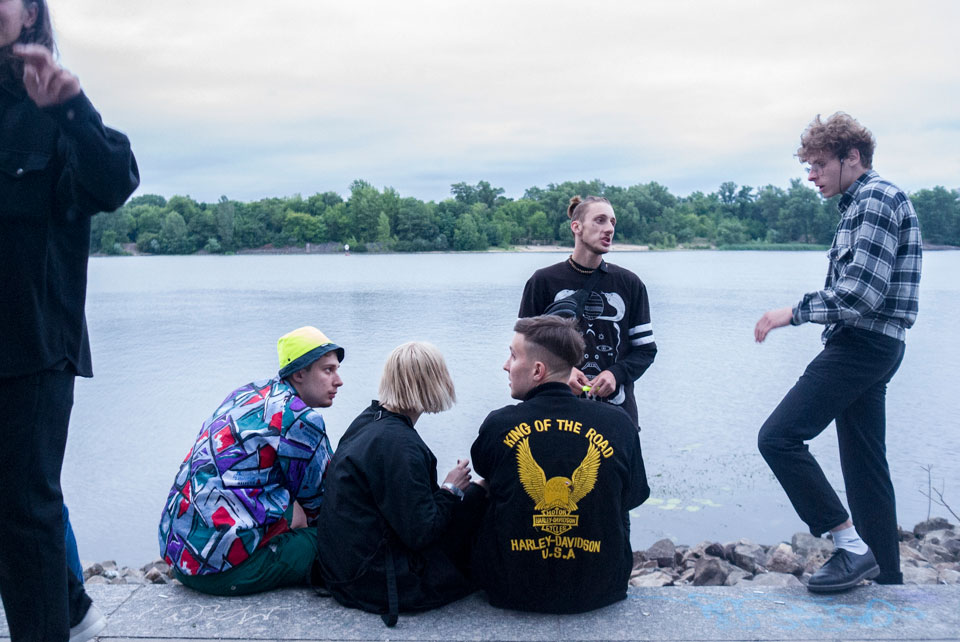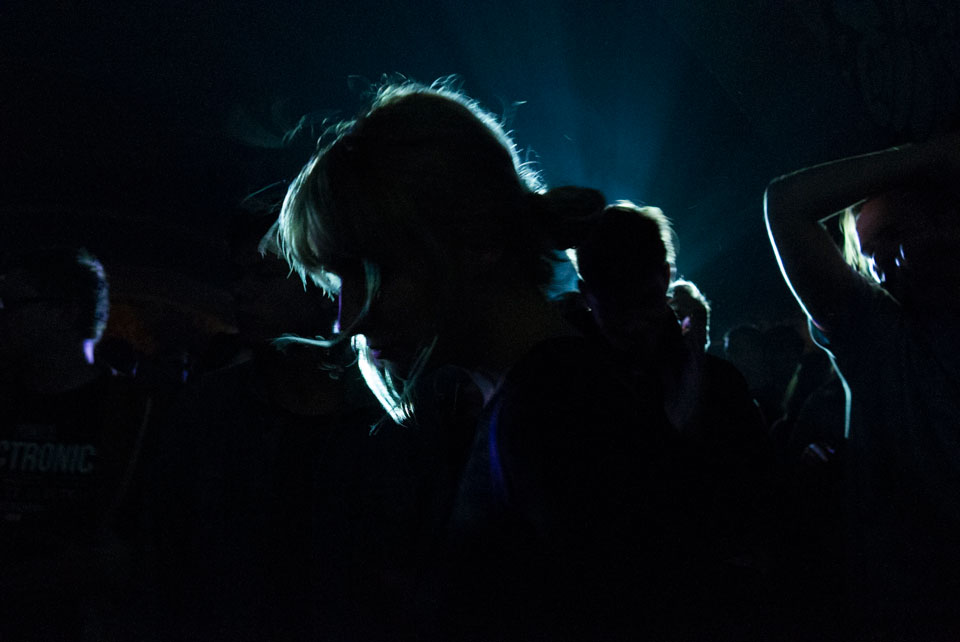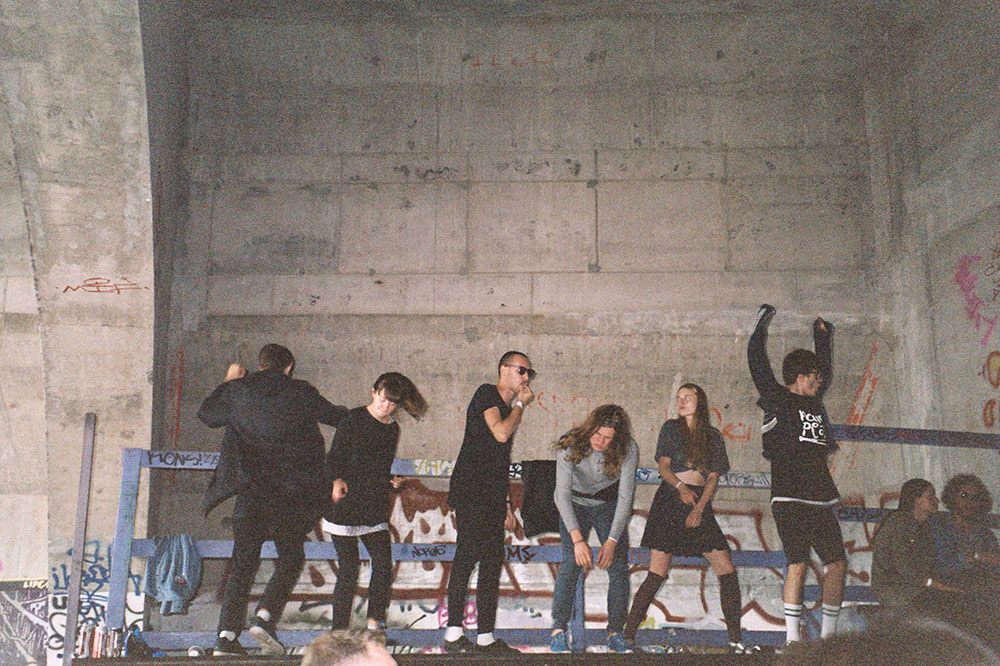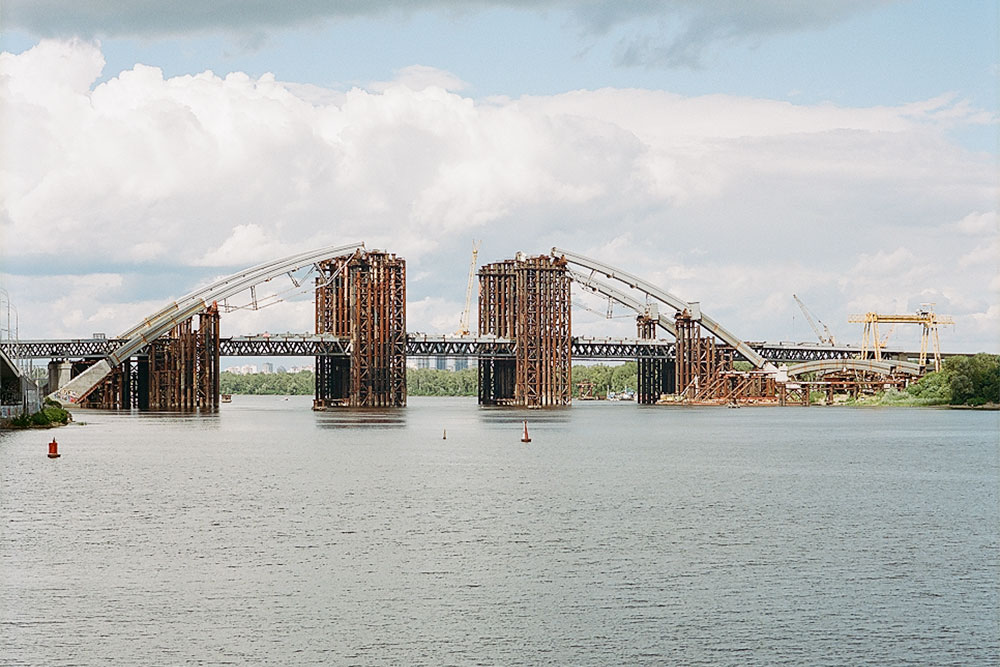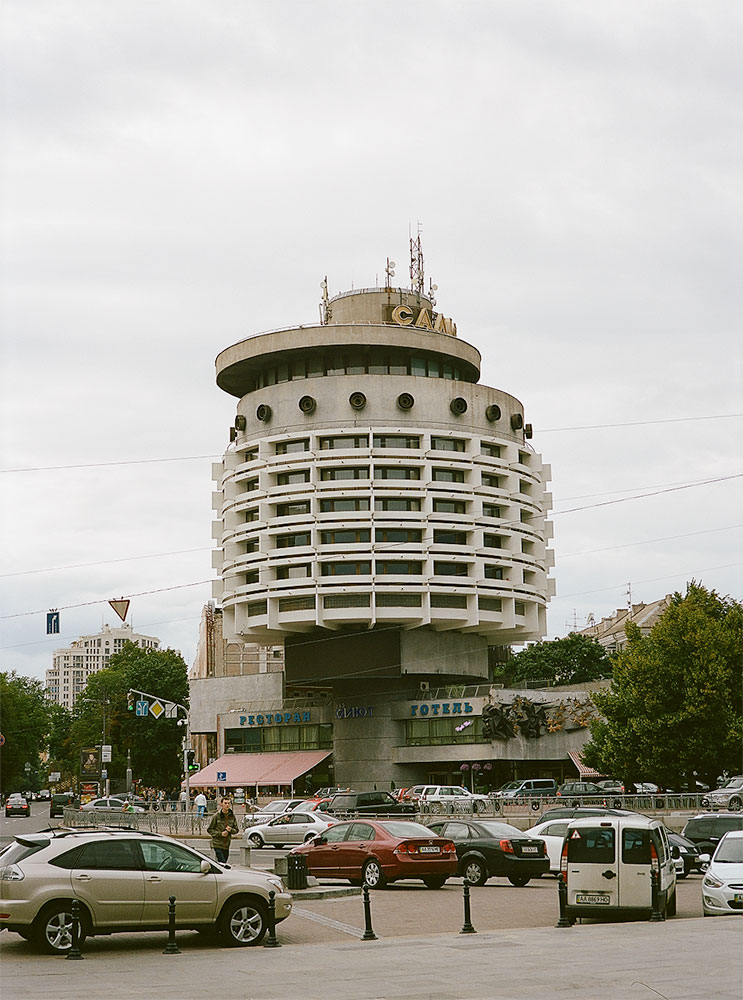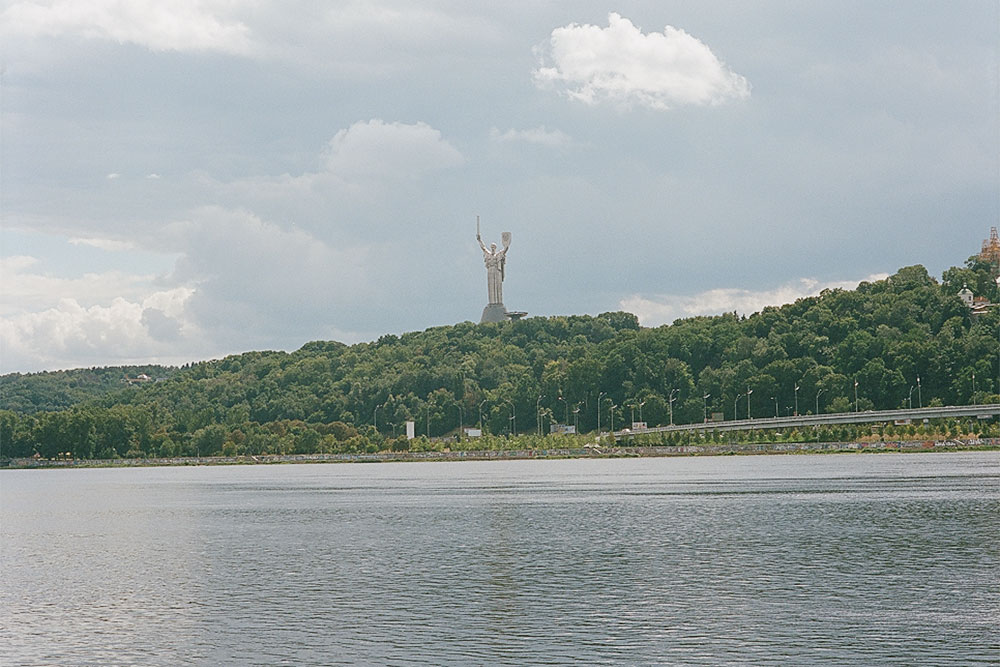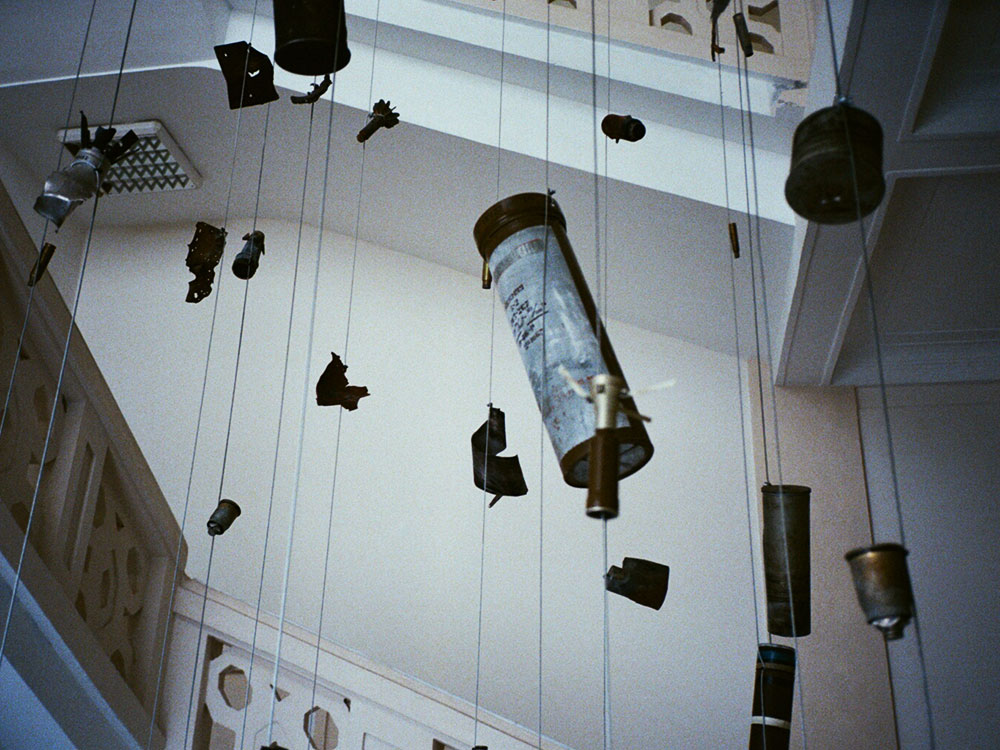Letter from: is post-Maidan Kiev the new Berlin or a city making its own future?
Kiev Now: Part OneIt’s past seven in the morning, and I’m at a rave at the top of an empty office block. The dance floor is bathed in red light, thinning gradually as the morning comes. It doesn’t look like the party’s going to wrap up anytime soon. I came here from another rave in an arched brick warehouse space. There was barely any heating so you had to keep your coat on. Most of the DJs were from Odessa. It was perfect: lasers and darkness and kids dancing like crazy. My flight back to London is in six hours but I don’t want to leave. I’m a tourist here but I feel like I belong. I can’t remember the last time I had this feeling.
Two days before that, I’d been at the The House of Clothes, the main venue for the School of Kyiv art biennial. This vast modernist space, constructed in 1968, glowed in the early evening light, crisscrossed by geometric shadows. While the biennial has 16 locations, reflecting the multi-layered history and diverse character of the city, it’s particularly exciting to discover modernist venues such as The House of Cinema or the Kiev Palace for Children and Youth. These are places you would simply not notice otherwise: dusty, covered with signage, overshadowed by glossy new buildings.
“What attracted us was lightness and brightness”, says one of the School of Kyiv curators Hedwig Saxenhuber. “It’s also like a journey in time, into the vision of a future which never became reality, particularly if you look at the city’s new architecture”. Some locations showcase other aspects of the city’s history: there are a few contemporary galleries like Soshenko Studios, a well-known centre of the artistic underground, and the simultaneously horrifying and fascinating area of Vozdvizhenka: a newly-built shiny copy of old Kiev which replaced the decaying old buildings there before. Pumped up on fast wealth, it looks like an amusement park: plastic window frames, pastel colours and evidently cheap materials, cracks and loose bricks here and there.
A year on since Maidan, Kiev remains a very politically charged place. I go to the renowned square with artist Sasha Kurmaz. As he warned me, it’s clean and new, and looks nothing like the burnt black circle of last year, having reverted back to its original look of a plexiglass plaza. Just opposite the square the newly repaired building is covered with a large, perfectly white banner, like a new clean page yet to be written on. The aftermath of Maidan is not located here; it’s dissolved in the city, in small Ukrainian flags hanging from balconies, in large tasteless patriotic graffiti, in building fences painted yellow and blue.
Kiev’s a crazy mixture of history and outrageous modernity, of in-your-face wealth and friends who never have any money
The School of Kyiv is not just about contemporary art. One of its key aims is to raise crucial questions of history and politics, and how to move forward from where Ukrainian society is now. Artists, curators, writers and academics from all over the world have come to discuss it. As the evening light fades behind the large windows of the House of Clothes, a discussion on decommunisation focuses on the dismantling of the Lenin monument in Lugansk. Opinions vary: artist Sanja Ivekovic says it resembles the favoured method of ISIS, while writer Masha Gessen insists that all Soviet symbols should be banned just like those of Nazi Germany. Academic Marci Shore brings up the generation which grew up in Soviet Ukraine, and reflects that many of them must feel their personal history is being raped by decommunisation. As I listen, the horror starts rising slowly inside of me. I remember my school history books. The history I’ve been taught, just like kids all over Russia, was distorted too — told from the perspective of the oppressor, lined with ideology.
One of the School of Kyiv locations is the National Museum of the History of Ukraine. The new shiny marble staircase is wrapped around an installation (not an artwork, he insists) by Nikita Kadan: bits and pieces of missiles found in Eastern Ukraine quietly hanging on string, a frozen shower of destruction in mid-flight stretching down from a Soviet tapestry at the top of the stairs onto a collection of institutional palm trees below. Some of the missiles, Nikita says, have got Russian markers on them. His actual artwork, titled The Possessed Can Testify in Court, explores the Soviet history of Crimea and the Donbass region. His works, postcards in thick frames filled with coal dust, share shelves with objects from the museum’s collection: battered Soviet sculptures, souvenirs, corporate presents. Two of those look particularly mesmerising: glass cabinets with the outline of an island and miniature palm trees. They are presents from the workers of Crimea to the general secretary.
I think about the sentiment that filled the workers upon the act of giving, the joy and pride, and I feel nauseous. I have this feeling sometimes when hearing old Soviet songs: I think of my parents when they were very young, of their hopes for the bright future, the joyful May Day parades and the terror and repressions lurking behind them. My generation was born on the brink of the Soviet Union’s collapse, and there is a lot of history running through our veins, at times terrifying and confusing. Opening my mouth I have to speak the language of the oppressor but it’s the only one we have in common for now — yet I couldn’t have felt more of a connection with my Kiev friends.
The “new Berlin” largely means a place which is cheap and mildly exotic, but not too much
The day before I leave I meet fashion designer Anton Belinskiy, nominated for the LVMH Prize this year for his collection proudly adorned with what seems to be the slogan of contemporary Ukrainian youth: Poor But Cool. We end up at Zhitniy Market, walking past tables with melons, plastic cups of raspberry and bright orange sea buckthorn. The building of the market is mindblowing: the ceiling is like a concrete cloth loosely hanging on four poles.
Anton is looking at silky kickboxing trousers with a Ukrainian flag on the front. The roots of his designs are probably here, alongside oversized fake Adidas sports jackets — or maybe they were created in spite of this. Running your own label in Ukraine today is not easy but he’s counting on the future of digital platforms, on the fact that soon there’s not going to be any need to go to fashion weeks.
Kiev is poor but cool indeed, but not only that. It’s a crazy mixture of history and outrageous modernity, of in-your-face wealth and friends who never have any money. In three days I went to a talk on decommunisation and the future of gender equality, an opening of a luxury perfume store with champagne flowing and ladies in stilettos, and then a speakeasy in the basement of an old movie theatre which could have easily been in London or Brooklyn.
This diversity is probably why most of my Kiev friends shared some scepticism about the School of Kyiv. Why, one of them asked, were experts from Europe and US discussing decommunisation, when they have no experience of communism itself? It sums up pretty well the uneasy feeling of the western gaze which only wants to see the city through certain lenses.
These days Kiev, just like Belgrade and Budapest, is often described as the “new Berlin”. This largely means a place which is cheap (thanks to the collapse of the local currency) and mildly exotic, but not too much. This is a tourist’s approach to a place which only scratches the surface. During my stay I bought a t-shirt by artist Igor Okuniev which says ТРОЄЩИНА (Troieshchyna) in red block capitals over black. It’s the name of a notorious dormitory suburb of Kyiv, where celebrated French artist Cyprien Gaillard shot some of his works. I like wearing it but I feel a bit ashamed because, even though I come from a similar background, I’m still an outsider. I leave, and my friends stay there — with their history, memory, future. That evening when I get back to London, they’re still partying and haven’t slept yet.
Text: Anastasiia Fedorova
Image: Anastasiia Fedorova, Ryan Koopmans, Sergey Kostromin, Yana Mikhaylenko, Misha Bochkarev
Date: November 2015
